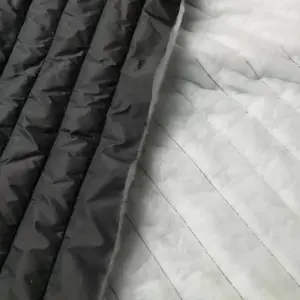Can You Wear Wool and Viscose Together?
Fabric compatibility is a crucial consideration in fashion and sewing, influencing the look, feel, and longevity of garments. When it comes to wool and viscose, understanding their compatibility can open up new design possibilities. This article explores whether these two fabrics can be worn together and provides practical advice for sewing and styling them.
Compatibility Analysis
Yes, you can wear wool and viscose together. These fabrics complement each other well due to their unique properties. Wool, a natural fiber, offers warmth and durability, while viscose, a semi-synthetic fiber, provides a smooth texture and drapes beautifully. Key factors like texture, weight, and care requirements align well enough to make this pairing successful.
- Texture: Wool’s natural texture is soft yet robust, while viscose is silky and smooth. Together, they create a balanced tactile experience.
- Weight: Wool is generally heavier, providing structure, while viscose is lightweight, adding fluidity.
- Stretch: Wool has natural elasticity, and viscose adds a slight stretch, enhancing comfort.
- Care Requirements: Both require gentle handling, though wool often demands dry cleaning, while viscose can be hand-washed or machine-washed on a delicate cycle.
- Durability: Wool is highly durable, and viscose, while less so, contributes to a garment’s longevity when used in blends.
Fabric Properties Comparison Table
| Property | Wool | Viscose |
|---|---|---|
| Fiber Content | Natural | Semi-synthetic |
| Weight and Thickness | Medium to heavy | Light to medium |
| Breathability | High | Moderate |
| Moisture-Wicking | Excellent | Moderate |
| Stretch and Elasticity | Moderate | Low |
| Wrinkle Resistance | Moderate | Low |
| Care Instructions | Dry clean or hand wash | Hand wash or delicate machine wash |
| Durability | High | Moderate |
Benefits of Mixing These Fabrics
- Enhanced Texture and Visual Interest: The combination of wool’s texture with viscose’s sheen adds depth to garments.
- Improved Comfort and Performance: The natural warmth of wool combined with viscose’s softness enhances wearability.
- Better Drape and Movement: Viscose’s fluidity complements the structure of wool, improving the garment’s silhouette.
- Cost-Effectiveness: Blending these fabrics can reduce costs compared to using pure wool.
- Seasonal Versatility: Suitable for both winter and transitional seasons.
- Design Possibilities: Allows for innovative designs in both fashion and home decor.
Potential Challenges
- Different Shrinkage Rates: Pre-wash fabrics to minimize shrinkage discrepancies.
- Conflicting Care Requirements: Opt for the gentlest care method common to both.
- Texture Clash or Pilling: Use fabric softeners and gentle washing techniques.
- Seam Puckering: Stabilize fabrics with interfacing where necessary.
- Color Bleeding or Fading: Test wash small swatches before full garment construction.
Sewing & Styling Tips
- Sewing Techniques: Use a ballpoint needle for viscose and a universal needle for wool. A zigzag stitch can accommodate stretch.
- Needle and Thread Recommendations: Use polyester thread for flexibility and strength.
- Interfacing and Stabilizer Needs: Lightweight interfacing can help maintain structure.
- Seam Finishing Methods: French seams or serging prevent fraying.
- Pattern Selection Advice: Choose patterns that highlight drape, such as A-line skirts or loose-fitting blouses.
- Styling Ideas: Pair wool-blend trousers with a viscose blouse for a chic, layered look.
Care & Maintenance Guide
- Washing Instructions: Hand wash in cold water or use a delicate machine cycle.
- Drying Recommendations: Lay flat to dry to maintain shape.
- Ironing and Steaming Tips: Use a low heat setting and a pressing cloth.
- Stain Removal: Use gentle stain removers suitable for both fibers.
- Long-Term Care: Store in a cool, dry place to prevent moth damage and fabric degradation.
FAQ Section
- Can you wash wool and viscose together? Yes, but use a delicate cycle or hand wash to prevent damage.
- Will wool shrink more than viscose? Wool is more prone to shrinkage; pre-wash and handle carefully.
- What needle size should I use for sewing these fabrics together? A size 70/10 or 80/12 needle works well.
- Can you mix wool and viscose in one garment? Absolutely, they complement each other beautifully.
- How do you prevent pilling when combining these fabrics? Use fabric softener and wash gently.
- Is it okay to mix wool and viscose for upholstery? Yes, but ensure proper care to maintain fabric integrity.
- What’s the best way to finish seams with these fabrics? French seams or serging are recommended.
In conclusion, wool and viscose are a versatile and stylish combination, offering numerous benefits for both fashion and home decor. By understanding their properties and following the provided tips, you can create beautiful, durable garments and items that showcase the best of both fabrics.

Leave a Reply